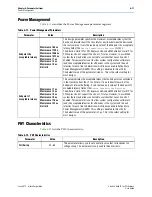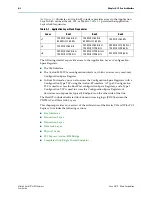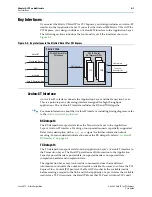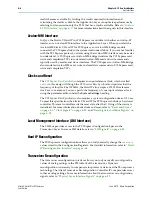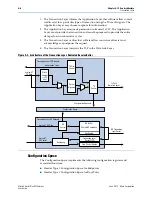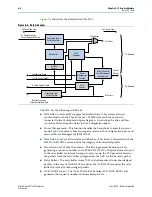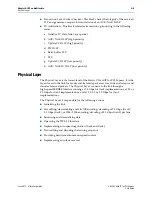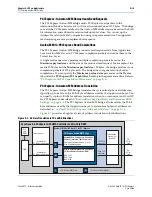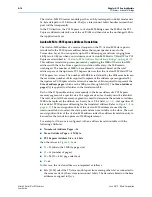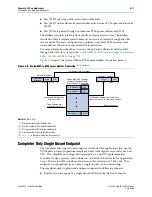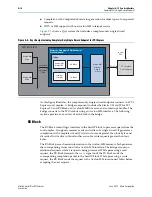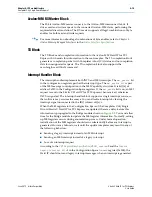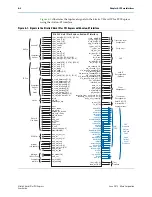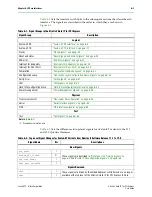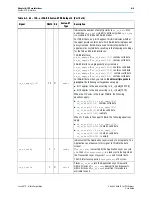
Chapter 5: IP Core Architecture
5–11
PCI Express Avalon-MM Bridge
June 2012
Altera Corporation
Stratix V Hard IP for PCI Express
■
LTSSM—This block implements the LTSSM and logic that tracks what is received
and transmitted on each lane.
■
For transmission, it interacts with each MAC lane sub-block and with the
LTSTX sub-block by asserting both global and per-lane control bits to generate
specific Physical Layer packets.
■
On the receive path, it receives the Physical Layer Packets reported by each
MAC lane sub-block. It also enables the multilane deskew block. This block
reports the Physical Layer status to higher layers.
■
LTSTX (Ordered Set and SKP Generation)—This sub-block generates the Physical
Layer Packet. It receives control signals from the LTSSM block and generates
Physical Layer Packet for each lane. It generates the same Physical Layer Packet
for all lanes and PAD symbols for the link or lane number in the corresponding
TS1/TS2 fields.
The block also handles the receiver detection operation to the PCS sub-layer by
asserting predefined PIPE signals and waiting for the result. It also generates a
SKIP ordered set at every predefined timeslot and interacts with the TX alignment
block to prevent the insertion of a SKIP ordered set in the middle of packet.
■
Deskew—This sub-block performs the multilane deskew function and the RX
alignment between the number of initialized lanes and the 64-bit data path.
The multilane deskew implements an eight-word FIFO for each lane to store
symbols. Each symbol includes eight data bits, one disparity bit, and one control
bit. The FIFO discards the FTS, COM, and SKP symbols and replaces PAD and
IDL with D0.0 data. When all eight FIFOs contain data, a read can occur.
When the multilane lane deskew block is first enabled, each FIFO begins writing
after the first COM is detected. If all lanes have not detected a COM symbol after
seven clock cycles, they are reset and the resynchronization process restarts, or
else the RX alignment function recreates a 64-bit data word which is sent to the
DLL.
PCI Express Avalon-MM Bridge
In Qsys, the Stratix V Hard IP for PCI Express is available with either an Avalon-ST or
an Avalon-MM interface to the Application Layer. When you select the Avalon-MM
Stratix V Hard IP for PCI Express, an Avalon-MM bridge module connects the PCI
Express link to the interconnect fabric. The bridge facilitates the design of Endpoints
that include Qsys components.
The full-featured Avalon-MM bridge provides three possible Avalon-MM ports: a
bursting master, an optional bursting slave, and an optional non-bursting slave. The
Avalon-MM bridge comprises the following three modules:
■
TX Slave Module—This optional 64- or 128-bit bursting, Avalon-MM dynamic
addressing slave port propagates read and write requests of up to 4 KBytes in size
from the interconnect fabric to the PCI Express link. The bridge translates requests
from the interconnect fabric to PCI Express request packets.
■
RX Master Module—This 64- or 128-bit bursting Avalon-MM master port
propagates PCI Express requests, converting them to bursting read or write
requests to the interconnect fabric.



